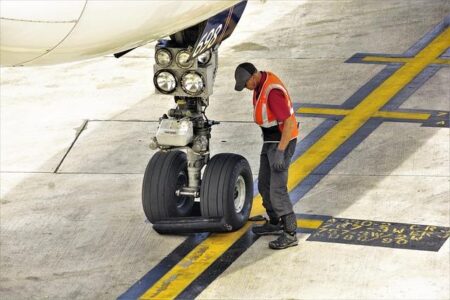The Japanese government is considering a proposal to relax language proficiency requirements for non-Japanese bus and taxi drivers, aiming to address labor shortages in the transportation sector. The initiative seeks to ease existing rules that mandate high-level Japanese language skills, potentially allowing more foreign workers to enter and remain in these critical public service roles. This move comes amid growing concerns over workforce gaps and the need to maintain reliable transportation services nationwide.
Eased Language Requirement Aims to Address Driver Shortage in Japan
In a move to combat the ongoing driver shortage in Japan’s public transportation sector, authorities have proposed relaxing the current language proficiency requirements for foreign bus and taxi drivers. The adjustment seeks to attract a larger pool of non-Japanese applicants by lowering the Japanese Language Proficiency Test (JLPT) standards, allowing more candidates with intermediate language skills to qualify. Officials emphasize that this change aims to maintain safety standards while offering flexibility to meet growing demand in urban and regional transit services.
Supporters of the proposal highlight the potential benefits, including increased employment opportunities for foreigners and improved service availability for commuters. However, concerns remain regarding communication barriers and passenger safety. To address these issues, the government plans to implement enhanced training programs alongside the eased language mandate.
| Current JLPT Level Required | Proposed JLPT Level | Additional Measures |
|---|---|---|
| N2 | N3 | Enhanced safety and communication training |
| Written and spoken | Primarily spoken | Regular language skill assessments |
| Expected increase in foreign driver recruitment by 25% within two years | ||
Concerns Raised Over Passenger Safety and Communication Effectiveness
Critics argue that relaxing language proficiency standards could lead to compromised passenger safety, especially in emergency situations where clear communication is vital. Several transportation experts warn that drivers who are not sufficiently fluent in Japanese might struggle to understand critical instructions or relay urgent information effectively. This concern is particularly acute in high-density urban areas where quick decision-making and precise communication can prevent accidents and ensure smooth traffic flow.
Passengers have also voiced worries about how eased language requirements might affect their experience. Many emphasize the importance of drivers being able to communicate clearly to give directions, respond to inquiries, and provide assistance. Below is a summary of key concerns raised by industry stakeholders:
- Potential delays in emergency response due to miscommunication
- Difficulty for tourists and elderly passengers in understanding safety instructions
- Challenges in handling complaints or disputes during rides
- Increased risk of misunderstandings leading to road incidents
| Issue | Impact |
|---|---|
| Language barriers | Reduced safety and service quality |
| Communication gaps | Delayed emergency procedure execution |
| Passenger dissatisfaction | Drop in trust and ridership |
Experts Recommend Balanced Approach to Language Proficiency and Training
Industry experts emphasize that while easing language requirements could address immediate driver shortages in the public transport sector, it must be coupled with robust training programs to ensure safety and customer satisfaction. Striking the right balance between language proficiency and professional skills is crucial, as drivers must communicate essential information effectively while navigating complex urban environments. Many argue that a more tailored approach-focusing on practical communication and emergency response language-can maintain service quality without imposing overly stringent language barriers.
Several transport associations propose targeted initiatives, including:
- On-the-job communication workshops focusing on basic conversational Japanese relevant to day-to-day interactions.
- Specialized safety and navigation training utilizing visual aids and technology to bridge language gaps.
- Regular assessments to monitor and support ongoing language and customer service skills.
| Training Focus | Proposed Duration | Expected Outcome |
|---|---|---|
| Basic Japanese Communication | 4 weeks | Improved passenger interaction |
| Safety Protocols & Emergency Handling | 2 weeks | Enhanced commuter safety |
| Navigation & Route Familiarization | 3 weeks | Efficient route management |
Wrapping Up
As discussions continue surrounding the proposed easing of language requirements for non-Japanese bus and taxi drivers, stakeholders remain divided on the potential impact on passenger safety and service quality. While proponents argue that the changes could help address driver shortages and improve accessibility, critics emphasize the need for clear communication to ensure public trust. The government’s decision in the coming months will be closely watched as Japan navigates the balance between labor demands and passenger security in its transportation sector.




